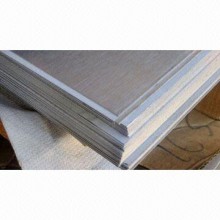產品
詳情描述
企業介紹
立即咨詢
Temperature Stability
AL-6XN alloy is metallurgically stable to 1000 °F (540 °C) ~and has no phase transformation even after extensive deformation. When exposed to temperatures in the range of 1200-1800° F the opportunity for chi phase formations exists. Chi phase, a chromium-iron-molybdenum compound (sometimes incorrectly referred to as sigma phase), forms along the grain boundaries depleting the area of molybdenum ~and chromium reducing the corrosion resistance of the material. In order to help combat chi phase formation, nitrogen was added to the AL-6XN alloy to minimize this formation, improving corrosion resistance ~and increasing strength over a broad range of temperatures, while maintaining the good formability of austenitic stainless steel.
The high strength ~and corrosion resistance of the AL-6XN alloy make it a better choice than the conventional duplex stainless steels ~and a cost effective alternative to more expensive nickel-based alloys in applications ~where excellent formability, weldability, strength ~and corrosion resistance are essential. It is a cost effective alternative to less expensive stainless steels that do not have the strength ~or corrosion resistance to maximize life cycles.
AL-6XN alloy has exceptional resistance to chloride corrosion, pitting, crevice corrosion, stress corrosion cracking, ~and excellent general corrosion resistance to various acid, alkalis ~and salt solutions.
AL-6XN alloy is identified by the Unified Numbering System (UNS) designation of N08367. AL-6XN alloy is an austenitic stainless steel alloy with high nickel, molybdenum, ~and nitrogen content. AL-6XN alloy has a face-centered cubic crystal structure similar to other austenitic stainless steels. The alloy is non-magnetic ~and its magnetic permeability remains low even after severe cold forming.
Element Typical Allowable
Carbon 0.02 0.03 maximum
Manganese 0.40 2.00 maximum
Phosphorus 0.020 0.040 maximum
Sulfer 0.001 0.030 maximum
Silicon 0.40 1.00 maximum
Chromium 20.5 20.00 / 22.00
Nickel 24.00 23.50 / 25.50
Molybdenum 6.20 6.00 / 7.00
Nitrogen 0.22 0.18 / 0.25
Copper 0.2 0.75
Iron Balance Balance


